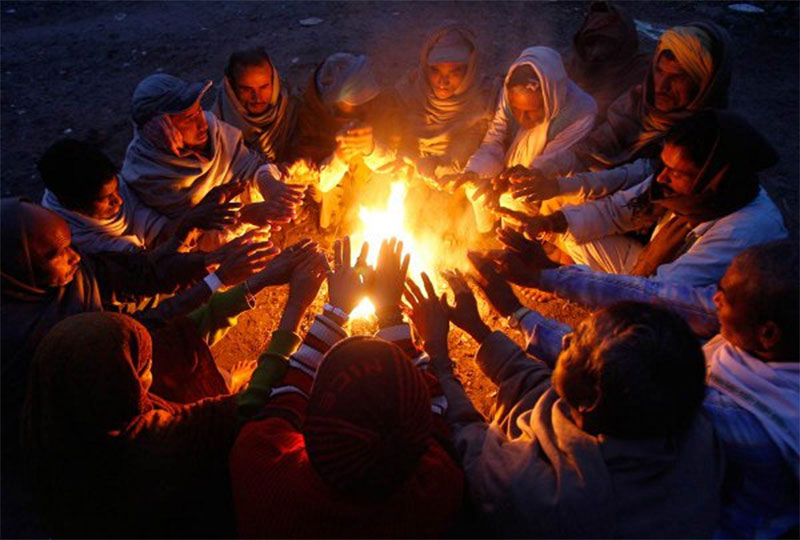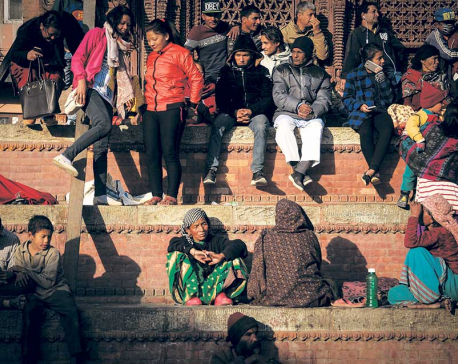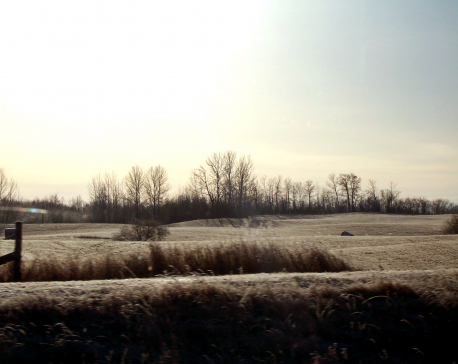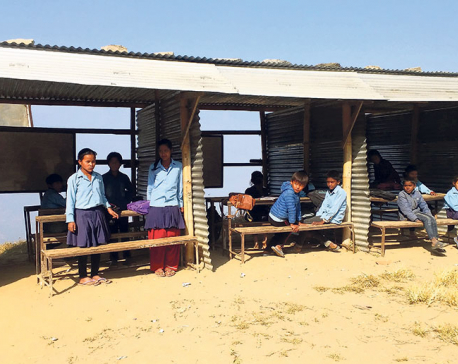
OR
Editorial
Preventing Cold Wave Deaths
Published On: December 21, 2022 07:30 AM NPT By: Republica | @RepublicaNepal

Winter for Nepalis is all about biting cold, more so for those who lack roofs over their heads and enough clothes to keep themselves warm in the cold season. The impact of winter is much more severe in the Tarai, the country’s southern plains, where cold waves kill people every year. The deaths due to the cold wave become news every year but sadly, the country has been unable to prevent these deaths. Usually, the cold wave, or in other words, a stagnant thick blanket of smoke and fog (smog) which is about 300-400 meters thick and hangs in the sky, prevents sunlight from reaching the earth’s surface, resulting in low visibility and an instant drop in temperature. The cold wave normally begins in the Terai around mid-December and lasts for about a month till mid-January. For the past few decades, cold waves have emerged as a major threat to the lives of Nepalis in the 23 districts of the Terai. Cold waves also have negative impacts on agricultural activities, affecting livelihoods. The impact of the cold wave was first recorded in Nepal in 1990. Back in those days, cold waves would linger for only a few days but the impacts of the annual winter phenomenon started to worsen especially after 1997. According to environmentalists and weather experts, cold waves are not a natural phenomenon but a result of human activities leading to air pollution.
Unfortunately, over four dozen people were killed by cold waves in the last three years. This year, the cold wave has already hit the country’s southern plains, already claiming two lives in Sarlahi district. Small children, elderly people and women are especially affected by cold waves. As Nepal lacks any standard measures to identify the potential occurrence of a cold wave and triggers to initiate a response, there is seemingly a lack of preparedness activities to face the annual adverse weather pattern. Even by moderate estimates, around 125,000 families in the Terai are affected by cold waves every year and these numbers are growing. The government must reach out to the stakeholders to find out the ways of mitigating the impact of winter and cold waves. The central government must coordinate with the rural municipalities, municipalities and metropolises and sub-metropolises and community-level disaster management committees to identify at-risk households and develop a response plan. The local governments must carry out rapid needs assessments to identify the most vulnerable families and their most urgent expected needs. The government, especially the local governments, NGOs and civil society organizations should coordinate with each other to meet the needs of the at-risk population. Most importantly, it is essential to establish a constant monitoring system for tracking weather data and develop an appropriate mechanism to activate alerts for cold waves.
It is really sad and unfortunate to see that people still die from the cold in Nepal. Though the country’s southern plains freeze in cold waves every winter, deaths from cold are preventable. But we have not been able to prevent these deaths due to the lack of concerted efforts of all sides. It is no secret that thousands of people in Terai are without warm clothes, blankets and beddings. This is the sad reality though it’s been over five years since we have had three layers of government under the federal setup. Besides the efforts made by the government agencies, there perhaps is a need for a humanitarian campaign initiated by the private sector through which the poor and needy can be provided with warm clothes, blankets and wood. Preventing deaths due to cold waves must be a priority for everyone. Most importantly, Nepal as a nation should make concerted efforts to end poverty which is the main reason behind the deaths from cold.
You May Like This

Ensuring Everyone Stays Warm in Winter
With winter in full bloom in the country, a major concern for a lot of Nepalis is the lack of... Read More...

Cold-related health complications on rise with dipping temperature
SIDDHARTHANAGAR, Dec 19: Rupandehi has increasingly seen thick smog in the morning of late. Temperature here has invariably gone down... Read More...

Searching for bright future under tin-roofed hut
NUWAKOT, Nov 25: The students of an earthquake-ravaged school in Nuwakot have been braving the unforgiving cold of winter, the... Read More...




Just In
- Nepalgunj ICP handed over to Nepal, to come into operation from May 8
- Nepal to gift two elephants to Qatar during Emir's state visit
- NUP Chair Shrestha: Resham Chaudhary, convicted in Tikapur murder case, ineligible for party membership
- Dr Ram Kantha Makaju Shrestha: A visionary leader transforming healthcare in Nepal
- Let us present practical projects, not 'wish list': PM Dahal
- President Paudel requests Emir of Qatar to help secure release of Bipin Joshi held hostage by Hamas
- Emir of Qatar and President Paudel hold discussions at Sheetal Niwas
- Devi Khadka: The champion of sexual violence victims



_20240423174443.jpg)











Leave A Comment